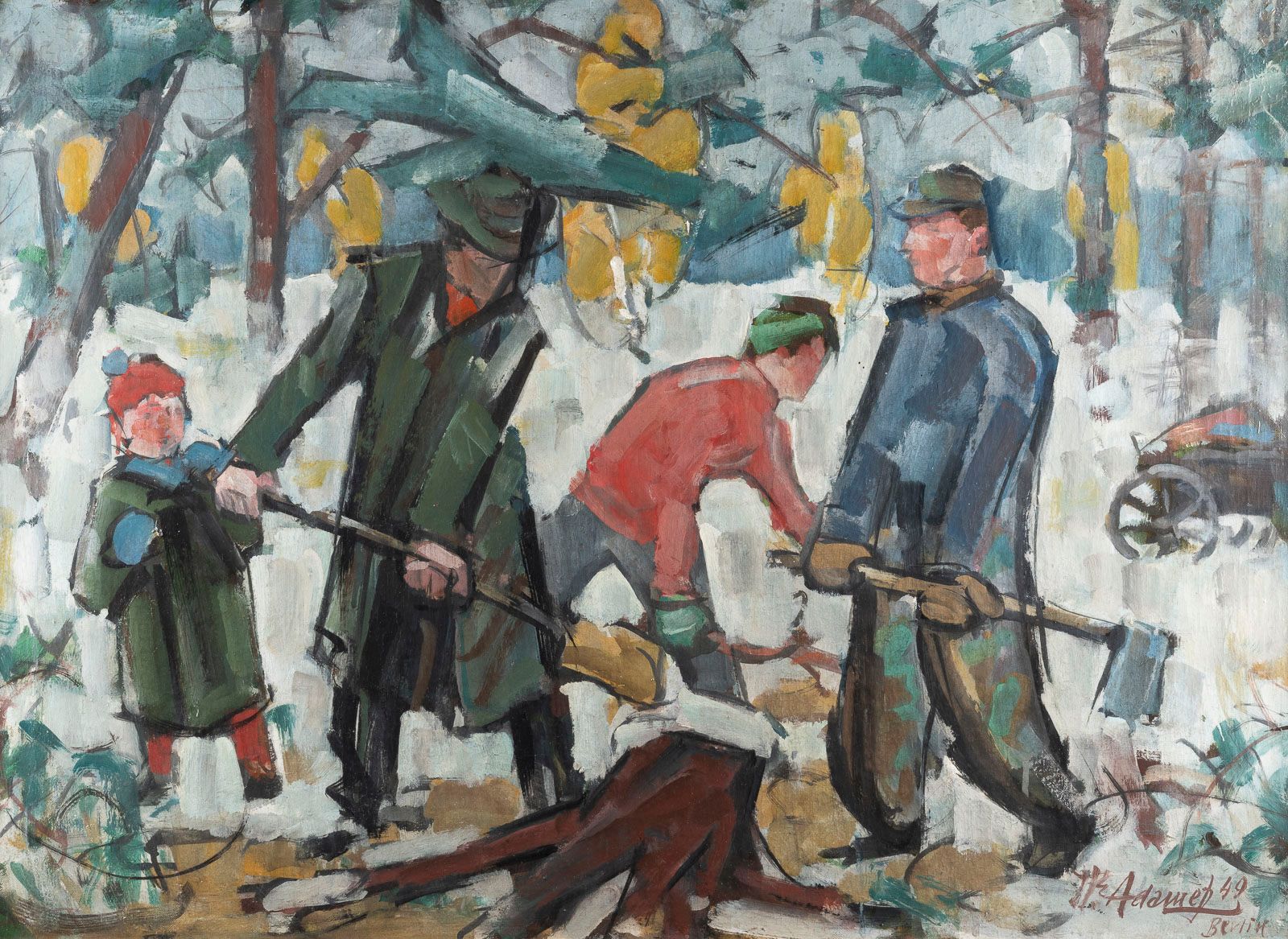Description
HEINRICH EMIL ADAMETZ 1884 Heiligenhaus - 1912 Berlin 'RODING IN WINTER' (1949) Oil on canvas. 70 x 97 cm (f. 80 x 105.5 cm). Signed and dated 'H.E. Adametz Berlin (19)49' lower right. Verso: On the stretcher inscribed 'H. E. Adametz Wilmersdorf, Offenbacher Str. 6 IV'. Part damaged and rest. Frame. HEINRICH EMIL ADAMETZ 1884 Heiligenhaus - 1912 Berlin 'STUBBENRODEN IM WINTER' (1949) Oil on canvas. 70 x 97 cm (R. 80 x 105.5 cm). Signed and dated 'H.E. Adametz Berlin (19)49' lower right. Verso: inscribed on the stretcher 'H. E. Adametz Wilmersdorf, Offenbacher Str. 6 IV'. Partly dam. and rest. Frame.
92
HEINRICH EMIL ADAMETZ 1884 Heiligenhaus - 1912 Berlin 'RODING IN WINTER' (1949) Oil on canvas. 70 x 97 cm (f. 80 x 105.5 cm). Signed and dated 'H.E. Adametz Berlin (19)49' lower right. Verso: On the stretcher inscribed 'H. E. Adametz Wilmersdorf, Offenbacher Str. 6 IV'. Part damaged and rest. Frame. HEINRICH EMIL ADAMETZ 1884 Heiligenhaus - 1912 Berlin 'STUBBENRODEN IM WINTER' (1949) Oil on canvas. 70 x 97 cm (R. 80 x 105.5 cm). Signed and dated 'H.E. Adametz Berlin (19)49' lower right. Verso: inscribed on the stretcher 'H. E. Adametz Wilmersdorf, Offenbacher Str. 6 IV'. Partly dam. and rest. Frame.
You may also like
